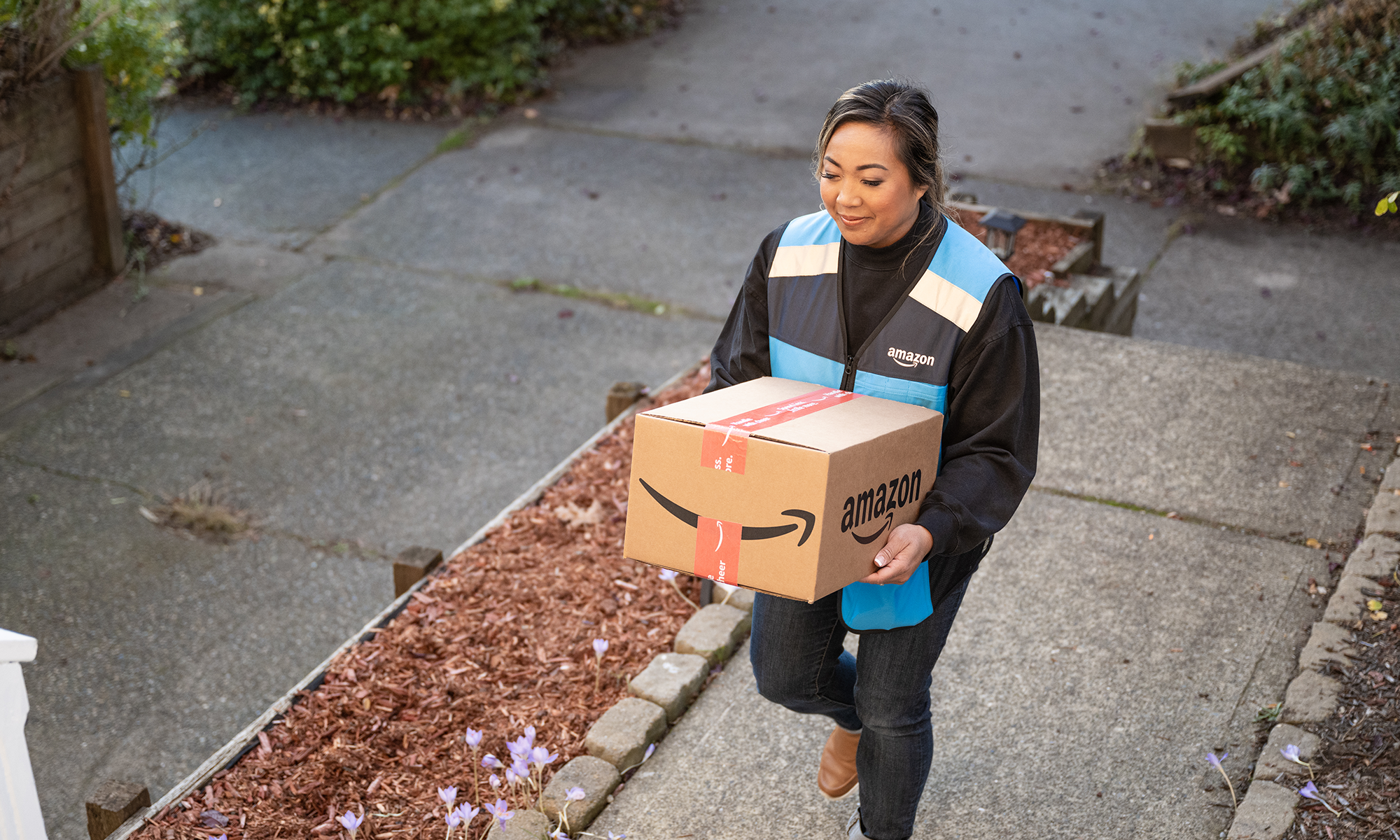When e-commerce behemoth Amazon.com (AMZN +0.50%) began offering free one-day shipping on a small universe of goods purchased by Prime customers, I expressed concerns. Chief among those worries was the sheer cost of offering quick no-cost shipping. It might cost more than it's worth, eating into margins rather than expanding them.
My concern wasn't terribly merited. The organization isn't more profitable as measured by margins. The added expense linked to the strategy, moreover, hasn't soared to devastating levels.
Free for you doesn't mean free for Amazon
The timing of this assessment isn't completely fair. The COVID-19 pandemic is clearly forcing businesses to operate in unusual circumstances; these numbers might look different were the coronavirus not slowing the global economy down.

Image source: Getty Images.
On the other hand, it would be naive to suggest Amazon hasn't also benefited from the pandemic. With consumers forced or choosing to stay at home and shop online, the company saw a 33% improvement in last quarter's top line. Besides, the cost to handle a package delivered to your door should be about the same regardless of what's in it, and there's no cost incurred if no purchase is made.
In short, the e-commerce business is consistently scalable regardless of the backdrop.
To that end, Amazon's scale-up since the middle of last year -- when it rolled out free one-day shipping for Prime members without any minimum order size -- has been OK. The table below tells the tale, breaking down delivery-related expenses as a percentage of total revenue since the first quarter of last year. Things are getting more expensive for the company, in conjunction with the generous move made in the middle of last year. But these expenses aren't racing higher.
| Select expenses as a percentage of revenue | Q1 2019 | Q2 2019 | Q3 2019 | Q4 2019 | Q1 2020 | Q2 2020 |
|---|---|---|---|---|---|---|
| Cost of Sales | 56.8% | 57.4% | 58.4% | 61.7% | 58.7% | 60.6% |
| Fulfillment | 14.4% | 14.7% | 14.4% | 13.8% | 15.2% | 15.5% |
| Shipping | 12.2% | 12.8% | 13.6% | 14.8% | 14.4% | 15.4% |
Data source: Amazon Quarterly SEC Filings
The data merits a handful of explanations.
First, while "cost of sales" seems like it would only indicate how much Amazon paid for the goods it sold, that's not quite the case. The company's quarterly SEC filings explain this line of the income statement reflects "inbound and outbound shipping costs, including costs related to sortation and delivery centers and where we are the transportation service provider." Perhaps almost as important, its cost of sales also includes expenses related to revenue driven by digital, non-physical goods.
Second, although "fulfillment" doesn't reflect direct delivery expenses, it does reflect an expense directly related to delivering more packages. This line of the income statement indicates "costs incurred in operating and staffing our North America and International fulfillment centers, physical stores, and customer service centers and payment processing cost." In that it takes as much manpower to package a $2 stick of deodorant as it does to box up a $60 video game disc, this is still an expense that could have burgeoned with the advent of Prime's one-day shipping promise. It didn't.
And third, "shipping" in this table isn't a reference to how much it costs the company to deliver a purchase to your door. Rather, it reflects the costs associated with receiving inventory from vendors, and as such is part of the total cost of sales mix. In the same vein as fulfillment costs, though, handling more but smaller outbound deliveries is likely to translate into more but smaller inbound deliveries.
In other words, it's not a stretch to say most of the expenses itemized here -- and their growth -- are linked to Amazon's sale of physical goods. It is costing the company more. It's just not costing leaps and bounds more.
The takeaway
Sure, it would have been nice if Amazon beefed up its top line by more than its expense items rather than the other way around, widening margins in the process. Maybe it will in the future. COVID-19 is clearly forcing businesses to operate in unusual circumstances that won't last forever. Margin improvement may be in the cards.
Even if healthier profitability isn't in the cards, though, Amazon deserves some credit. Free one-day shipping for Prime subscribers on a massive selection of goods isn't costing a proverbial arm and a leg. Indeed, the company's actually done rather well considering the measures it took when the fallout from the coronavirus started to gel. In March it stopped accepting deliveries of non-essential goods so it could solely focus on just getting basic consumer staples to as many customers as possible. It's plausible that customers were often buying these basics one order at a time, rather than purchasing several items together that would then be delivered in one box. COVID-19 infections also crimped the availability of warehouse workers when they were needed the most.
That said, it sure would be encouraging to see these expenses start to be curbed compared to sales going forward. More items per delivered package and better digital monetization of online shoppers would be the right places for Amazon to start.






